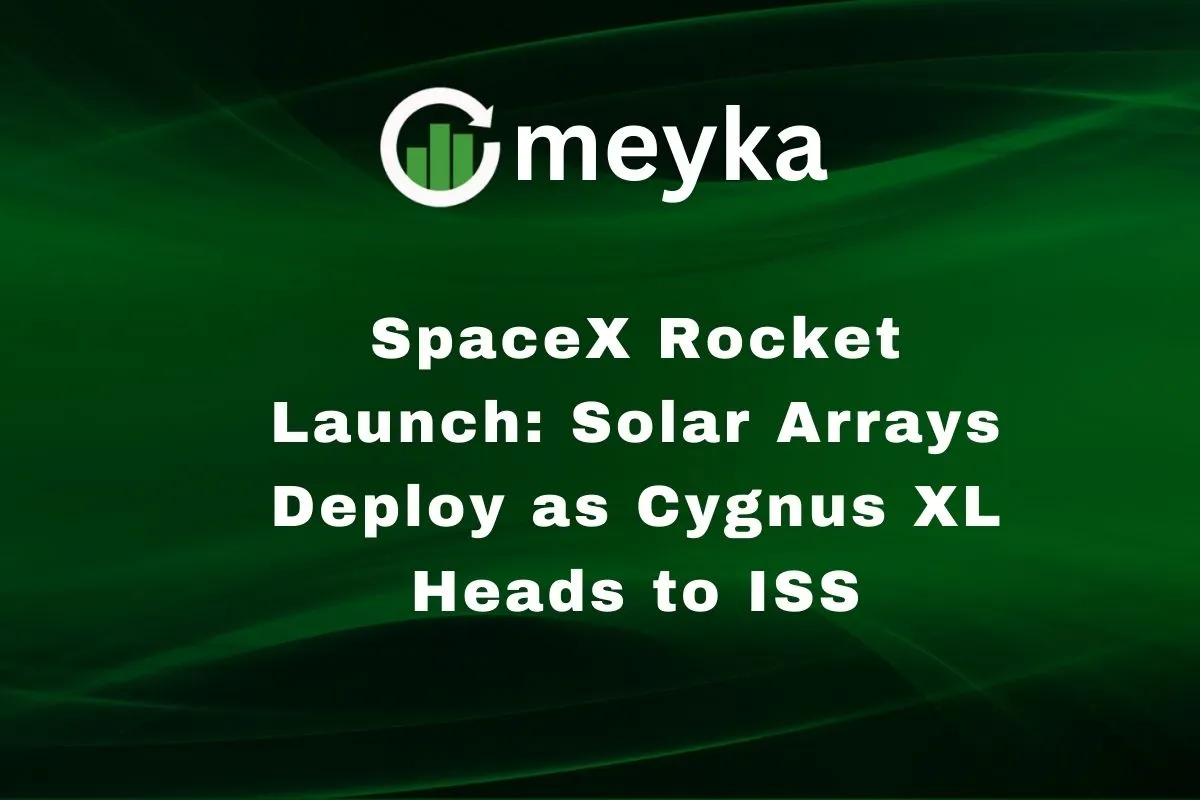SpaceX Rocket Launch: Solar Arrays Deploy as Cygnus XL Heads to ISS
SpaceX and Northrop Grumman have launched a major mission to the International Space Station (ISS). On September 14, 2025, the new Cygnus XL spacecraft lifted off aboard a SpaceX Falcon 9 rocket from Cape Canaveral. Shortly after launch, Cygnus XL deployed its solar arrays. They are essential for supplying power during the journey. This mission marks a step forward in cargo delivery and space science.
We see this launch as more than a cargo transfer. We see ambition. New capabilities. Shared work among agencies and companies. And, we’ll explore how Cygnus XL improves on past missions.
Background of the Mission
For years, NASA has relied on commercial partners to carry supplies, experiments, and equipment to the ISS. Cygnus is part of Northrop Grumman’s work under NASA’s Commercial Resupply Services (CRS-2) contract. Cygnus XL is the latest, larger version. It enters service with this mission, called NG-23.
The mission has goals: deliver science tools, spare parts, experiments, and crew supplies. We also need to test how the larger spacecraft works with station systems and crew operations.
The Launch Event
The rocket lifted off at 6:11 p.m. EDT on September 14, 2025, from Cape Canaveral’s Space Launch Complex 40. The vehicle was the Falcon 9, with booster tail number B1094. It had flown before; this was its fourth flight.
About 8 minutes after liftoff, the booster landed back at Landing Zone 2. Less than 15 minutes into the flight, the Cygnus XL separated from the upper stage to begin its path to the ISS.
Cygnus XL Spacecraft Overview
Cygnus XL is a stretch version of the Cygnus series. It can carry about 33% more cargo than previous versions. On this mission, it carried around 11,000 pounds (≈ 4,990 kg) of supplies, experiments, and spare parts.
The spacecraft remains berthed at the ISS for a long period, planned through March 2026. Certain constraints apply (e.g., docking port scheduling).
Solar Arrays Deployment
Roughly 90 minutes to two hours after launch, Cygnus XL deployed its two UltraFlex solar arrays. These solar arrays are the “cymbal-shaped” or circular ones. They supply power to the spacecraft’s systems. Without them, many systems onboard cannot function.
Deploying arrays successfully is critical. It signals that the spacecraft has power, is stable, and can proceed with its mission. We see it as a milestone.
Cargo and Scientific Payload
Cygnus XL carries more than just food, spare parts, and life support gear. It has science experiments, parts for future spacewalks, replacement units for systems onboard ISS, and hardware to maintain station operations.
Also onboard are several CubeSats. These small satellites will be deployed after Cygnus undocks. That provides them with a free-flying environment for experimentation.
There are experiments funded by ISS National Lab. The crew will also use part of the cargo to support investigations and upgrades.
International Collaboration
This mission shows how cooperation works in space. NASA, Northrop Grumman, and SpaceX all share tasks. NASA defines the needs. Northrop Grumman builds the cargo module. SpaceX provides launch capability with its Falcon 9. Together, they make it happen.
Crew members from NASA will capture Cygnus XL using Canadarm2, a robotic arm built by Canadian partners. That is another example of international contribution.
Also, experiments onboard often involve global partnerships, from universities to labs in different countries. Space research crosses national borders.
Impact and Future Missions
With Cygnus XL, we lower the cost per kilogram for resupply. More cargo means fewer missions needed for the same work. That saves money and resources. Also, this mission helps test new hardware and procedures. We gain experience with larger spacecraft, longer berthing times, and free-flying payloads post-undocking.
Looking ahead, these missions lay the groundwork for deeper space exploration, Moon missions, Mars, and beyond. Reliable resupply in orbit is essential for long-term human spaceflight.
There will be more Cygnus missions under CRS-2. Additionally, SpaceX continues to innovate with booster reuse, new launch hardware, and larger payloads.
Conclusion
The SpaceX Rocket Launch of Cygnus XL is more than a supply run. It is progress. We see success in solar array deployment, in added capacity, and in the science it supports. We have a bigger spacecraft. A rocket that delivers reliably. Teams on Earth and in space are working together.
As we move forward, missions like this will help us explore further with confidence. This is one small step to enabling greater human presence beyond Earth.
FAQS:
SpaceX has launched satellites for NASA, private companies, governments, and internet providers. It has also placed Starlink satellites to provide global internet coverage in many regions.
NASA uses SpaceX to send cargo and astronauts to the International Space Station. SpaceX rockets carry science gear, supplies, and support experiments that help space research and exploration.
Yes, SpaceX has carried astronauts into orbit using Crew Dragon. Since 2020, it has launched missions to the ISS, marking the return of human spaceflight from U.S. soil.
Disclaimer:
This content is for informational purposes only and is not financial advice. Always conduct your research.






